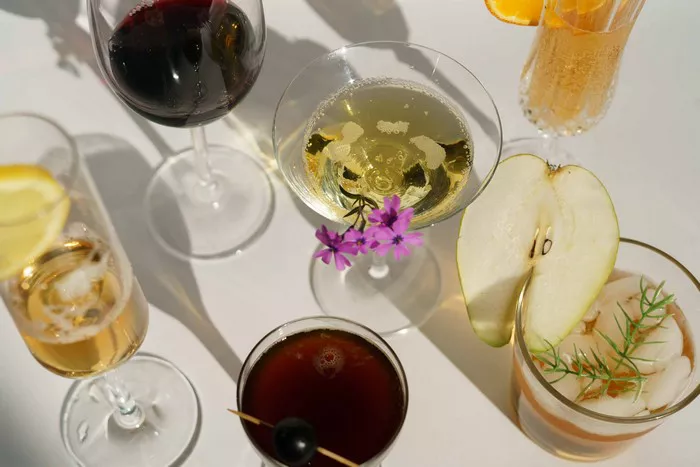Merlot red wine, known for its approachable character and rich flavors, has captured the hearts of wine enthusiasts worldwide. With a history dating back centuries, Merlot has earned its place among the most beloved red wines. In this comprehensive guide, we will explore the world of Merlot red wine, from its origins to the perfect serving temperature, food pairings, and the etiquette of savoring this delightful varietal.
The Origins of Merlot Red Wine
The story of Merlot red wine begins in the Bordeaux region of France. The name “Merlot” is derived from the Old French term “merlot,” which means “young blackbird.” The name is a reference to the dark blue-black color of the Merlot grapes. While the origins of the grape variety are somewhat debated, it is widely believed to have been cultivated in the Bordeaux region since the 18th century.
Merlot is often associated with Bordeaux, where it is one of the primary grape varieties used in red wine blends, particularly in the Right Bank appellations like Saint-Émilion and Pomerol. Over time, Merlot has found its way into vineyards across the globe, including regions in California, Chile, Italy, and Australia, where it thrives under different climatic conditions.
The Essence of Merlot Red Wine
Merlot red wine is celebrated for its smooth, velvety texture and approachable flavor profile. The essence of Merlot can be attributed to several key factors:
Flavor Profile: Merlot is known for its rich fruit flavors, which often include notes of plum, cherry, and red berry. These fruity notes are complemented by hints of cocoa, vanilla, and sometimes a touch of spice, adding complexity to the wine.
Soft Tannins: Merlot is recognized for its soft and supple tannins, making it an ideal choice for those seeking a red wine with a gentle mouthfeel. This characteristic contributes to the wine’s approachability, even for those new to red wines.
Versatility: Merlot is a versatile wine that can be enjoyed young and fresh or aged to develop more complex flavors. It pairs well with a wide range of foods and is often considered a crowd-pleaser due to its balanced and easy-drinking nature.
Moderate Alcohol Content: The alcohol content of Merlot typically falls in the moderate range, making it a great choice for those looking for a wine that doesn’t overpower the palate with alcohol heat.
Serving Merlot Red Wine
Serving Merlot red wine requires a few key considerations to ensure that you fully appreciate its flavors and characteristics.
Temperature: Merlot is best served at a temperature of around 55-65°F (13-18°C). This allows the wine to express its full range of aromas and flavors without being overly warm. You can achieve this temperature by chilling the wine slightly in a wine fridge or a cool cellar.
Glassware: Opt for a wine glass with a larger bowl to allow the wine to breathe and release its aromas. The shape of the glass should direct the wine to the tip of the tongue, enhancing the perception of its smooth texture.
Decanting: While Merlot is typically ready to drink upon opening, decanting can help aerate the wine and reveal its full potential. Pour the wine into a decanter and let it breathe for about 30 minutes before serving.
Pouring: When serving Merlot, fill the glass to about one-third full, allowing enough room for swirling and aerating the wine. Swirling can help release the wine’s aromas and flavors.
Storage: If you plan to store Merlot for aging, it’s essential to keep the bottles lying on their side in a cool, dark, and humid cellar to maintain the wine’s integrity.
Food Pairings with Merlot Red Wine
Merlot is known for its food-friendly character, and its versatility means it can be paired with a wide variety of dishes. Here are some excellent food pairings for Merlot:
Red Meat: Merlot’s ripe fruit flavors and soft tannins make it an excellent match for red meats like lamb, beef, and venison. Try it with a classic beef roast or grilled lamb chops.
Poultry: Merlot pairs well with poultry dishes, including roasted chicken, duck, or turkey. The wine’s gentle tannins and bright fruit notes complement the lighter flavors of poultry.
Pasta: Merlot is a natural fit with pasta dishes, especially those with tomato-based sauces. It works wonderfully with lasagna, spaghetti, or pasta primavera.
Cheese: Merlot’s smooth and fruity character is a great match for a range of cheeses, including soft, semi-soft, and hard varieties. Try it with brie, gouda, or cheddar.
Mushrooms: The earthy and mushroomy notes in Merlot make it an ideal companion for mushroom-based dishes, like mushroom risotto or truffle pasta.
Salmon: The lighter, fruit-forward Merlots can pair nicely with salmon dishes, particularly those prepared with a berry glaze or a hint of spice.
Savoring Merlot Red Wine
To fully savor Merlot red wine, consider the following tips:
Appearance: Begin by examining the wine’s appearance. Hold your glass up to the light to observe the color. Merlot typically displays a deep ruby to garnet hue.
Aroma: Swirl the wine gently in your glass to release its aromas. Bring your nose to the glass and take in the scents. You should detect a mix of red and black fruits, possibly with hints of cocoa and vanilla.
Taste: Take a sip and let the wine coat your palate. Pay attention to the balance of flavors and the wine’s smooth texture. Note the fruit, and subtle spice, and the overall mouthfeel.
Finish: Consider the wine’s finish, which is the lingering taste after you’ve swallowed. A well-crafted Merlot will leave a pleasant and harmonious aftertaste.
Pairings: Experiment with different food pairings to discover the diverse and delightful ways in which Merlot can enhance a meal.
Conclusion
Merlot red wine is a timeless classic in the world of wine, cherished for its approachable character and rich flavors. As you savor a glass of Merlot, raise your glass to its centuries-old history, its versatility, and the joy it brings to wine enthusiasts worldwide.


